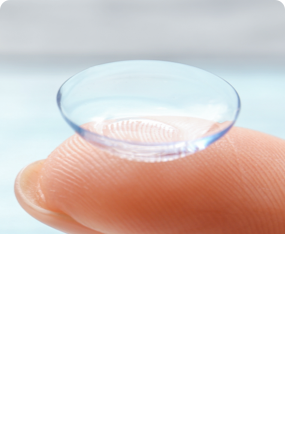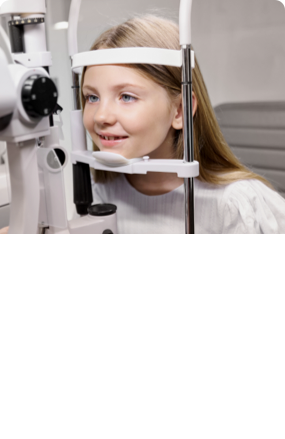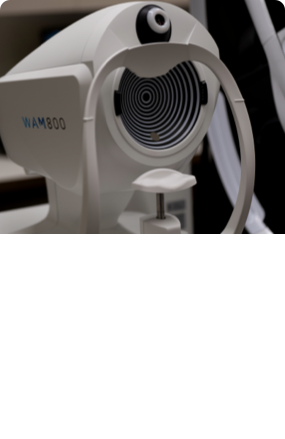As we age, our eyesight undergoes various changes, some of which are inevitable. One such age-related eye condition is macular degeneration, also known as age-related macular degeneration (AMD).
Some of the early indicators of this disease may include blurred vision, straight lines appearing distorted, a dim or dull quality of vision, and a need for increased light.
AMD is a leading cause of vision loss among people over 55 years old. In Canada, approximately 2.5 million adults have been diagnosed with some form of AMD. Thankfully, with timely diagnosis, treatment, and preventive measures, it’s possible to manage the symptoms and slow down the disease’s progression.
During a comprehensive eye exam, your optometrist can potentially detect AMD, along with other eye diseases and even non-eye-related conditions, before you experience any symptoms.
What Is Macular Degeneration?
AMD is a condition characterized by the deterioration of the macula, a small region at the center of the retina responsible for sharp and detailed vision. This impairment can severely impact a person’s ability to read, drive, recognize faces, and perform other daily activities.
While the exact cause of AMD is still unknown, several risk factors have been identified. These include age (the condition primarily affects individuals over 55), smoking, poor diet (both lack of proper nutrients or abundance of unhealthy foods), family history, metabolic syndrome, cardiovascular disease, and chronic UV/HEV light exposure.
Types of Macular Degeneration
There are 2 main forms of AMD: Dry AMD and Wet AMD.
Dry AMD
Dry AMD is the more common form, accounting for 85% to 90% of all cases, and occurs when small yellow deposits called drusen accumulate in the macula, causing it to gradually thin and lose function over time. This form of AMD typically develops over an extended period, with symptoms progressing slowly.
Wet AMD
On the other hand, wet AMD, also known as neovascular AMD, is less common but more severe. It’s characterized by the growth of abnormal blood vessels beneath the macula. These vessels are fragile and tend to leak fluid and blood, which can lead to rapid and severe vision loss. Dry AMD can turn into wet AMD at any time.
A couple of treatments may slow or stop wet AMD progression: Anti-VEGF injections or photodynamic therapy (PDT).
Early Warning Signs of Macular Degeneration
A significant concern with AMD is that it often presents with very few symptoms early on. By the time a person notices significant symptoms, they may have already begun losing vision. Once vision is lost due to AMD, it cannot be recovered because the damaged retinal cells cannot be regenerated.
While early dry AMD does not show symptoms, you may notice some symptoms in the intermediate stages, as well as late-stage dry and wet AMD.
Blurred or Distorted vision
An initial sign of AMD is blurred or distorted vision. You may find it hard to read small text, recognize faces, or even perform everyday tasks. The central vision is mostly affected, while the peripheral vision remains unaffected initially. If you experience such symptoms, it’s crucial to get an eye exam as soon as possible.
Dark or Blank Spots
Another common symptom of AMD that people may experience is the appearance of dark or blank spots in the central vision. You may experience a dark spot covering your central vision, obscuring objects from view, or seeing spots that aren’t there. This condition is known as scotoma, and you may need to consult your eye doctor immediately.
Decreased Brightness or Clarity
People with AMD often complain of decreased brightness and clarity of images. You may find that colours appear less vibrant, and it becomes increasingly challenging to differentiate between similar hues. This symptom usually results from damage to the macula, which affects how the retina processes light.
Need for Brighter Light
You may find that you need higher illumination levels to read or see well as AMD progresses. The need for brighter light is a common phenomenon among older adults, but if you experience it suddenly, it could be a sign of AMD. Consider investing in brighter bulbs or a magnifying glass to help you see better.
Macular Degeneration Prevention Tips
While aging is a primary risk factor for macular degeneration, certain lifestyle changes may help prevent or delay the onset of the disease. The most important factor is consuming an ancestrally-appropriate whole-foods diet that is rich in fat-soluble vitamins and minerals, and one that minimizes the toxic elements of “Westernized” diets including refined sugars, refined grains, and vegetable oils (Canola, Soybean, Corn, Sunflower, Safflower, Cottonseed, Grapeseed, & Ricebran – all which are high in toxic Omega-6 fats).,
You can learn more about proper dietary strategies for eye health at cureamd.org.
Other important factors include quitting smoking, exercising regularly, and protecting your eyes from UV rays. Additionally, regular eye exams can help detect early signs of AMD.
Discuss Your Eye Health with Your Eye Doctor
AMD is a long-term progressive condition that can cause significant visual impairment. With preventive care and regular eye exams and screenings, you can reduce your risk of AMD and minimize its impact on your life.
Reach out to our professional team at Orchard Park Optometry if you have any troubling symptoms or if you’re due for your next comprehensive eye exam. We’re happy to get you in to see one of our experienced optometrists.


















